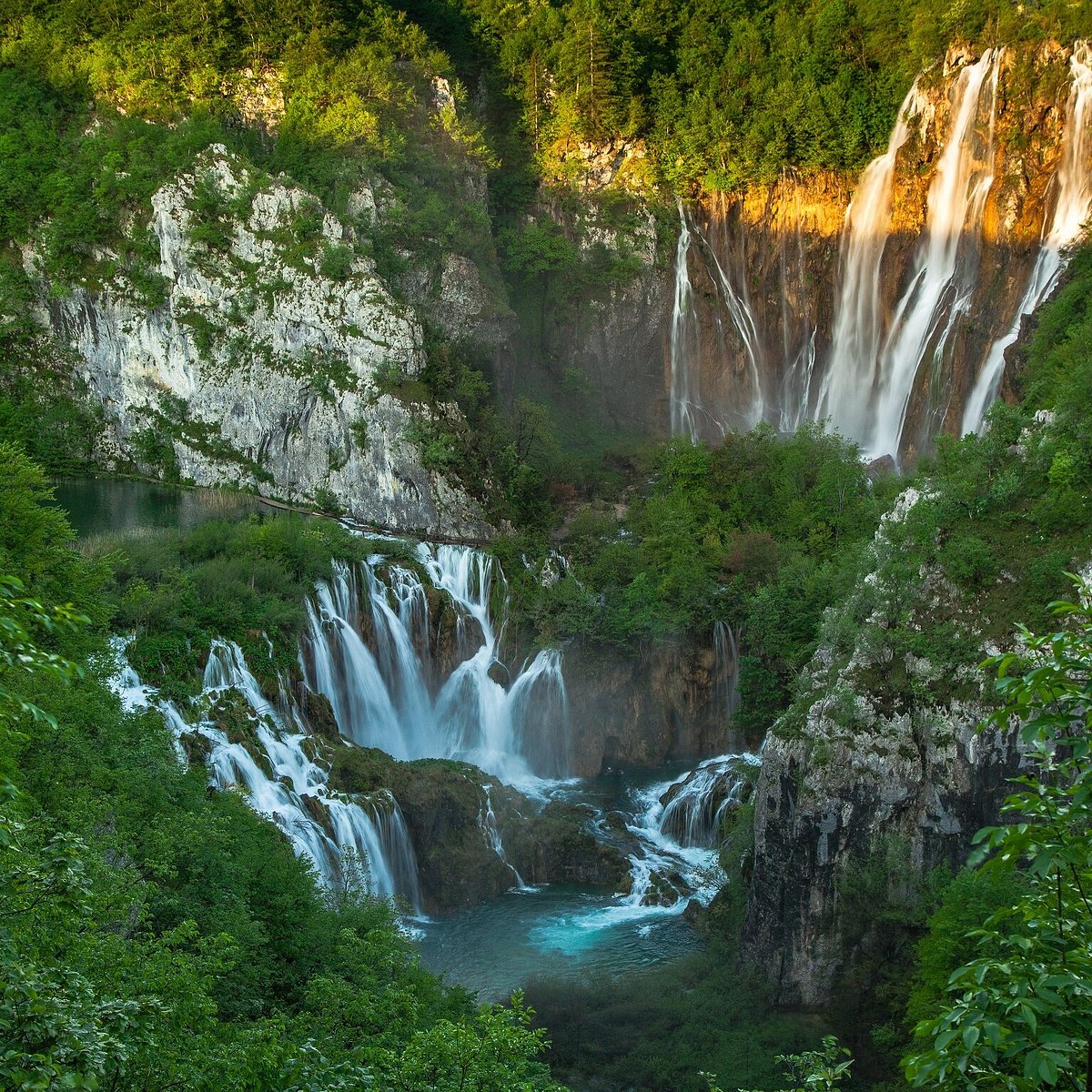Gubavica waterfall
Gubavica is a 50m waterfall located in a Cetina river canyon near Zadvarje.
In Zadvarje is a viewpoint from where you can see Gubavica waterfall.
When the river Cetina is full of water, waterfall provides an unforgettable sight.
Visit several viewpoints on top of the waterfall and take perfect photo for your Instagram :-)
Go on a canyoning adventure on the Cetina River with a professional guide and you can jump into the water under Gubavica waterfall.
Gubavica waterfall is 3 km far away from our holiday home.

Duare fortress
Medieval fortress Duare is located in Zadvarje, on the very important and in prehistoric times traced route that leads from coast to the inland.
Duare name means doors, passage. Duare is the fortress that represent the gates of the river Cetina towards the coastal area.
In March, AD 1669, in the battle beneath the tower died the commander of the fort Hasan Aga Arapovic (husband of Hasanaginica).
According to some legends and researches his grave is near by, in village Potpoletnica.
Duare fortress is 3 km far away from our holiday home.

Old bridge on Cetina river
Cetina is a river in southern Croatia. It has a length of 101 km.
Cetina has its source in the northwestern slopes of Dinara mountain.
Canyon of Cetina river is also known as an important historical and archaeological site.
Visit old brigde in Kreševo, and enjoy in magnificant view of deep Cetina canyon.
Old brigde is 5 km far away from our holiday home.

Old wells in Cista
In Cista Provo there are seven large old wells dating from the Middle Ages, or earlier.
They are incredible photo shoot location.
Wells in Cista are 8 km far away from our holiday home.
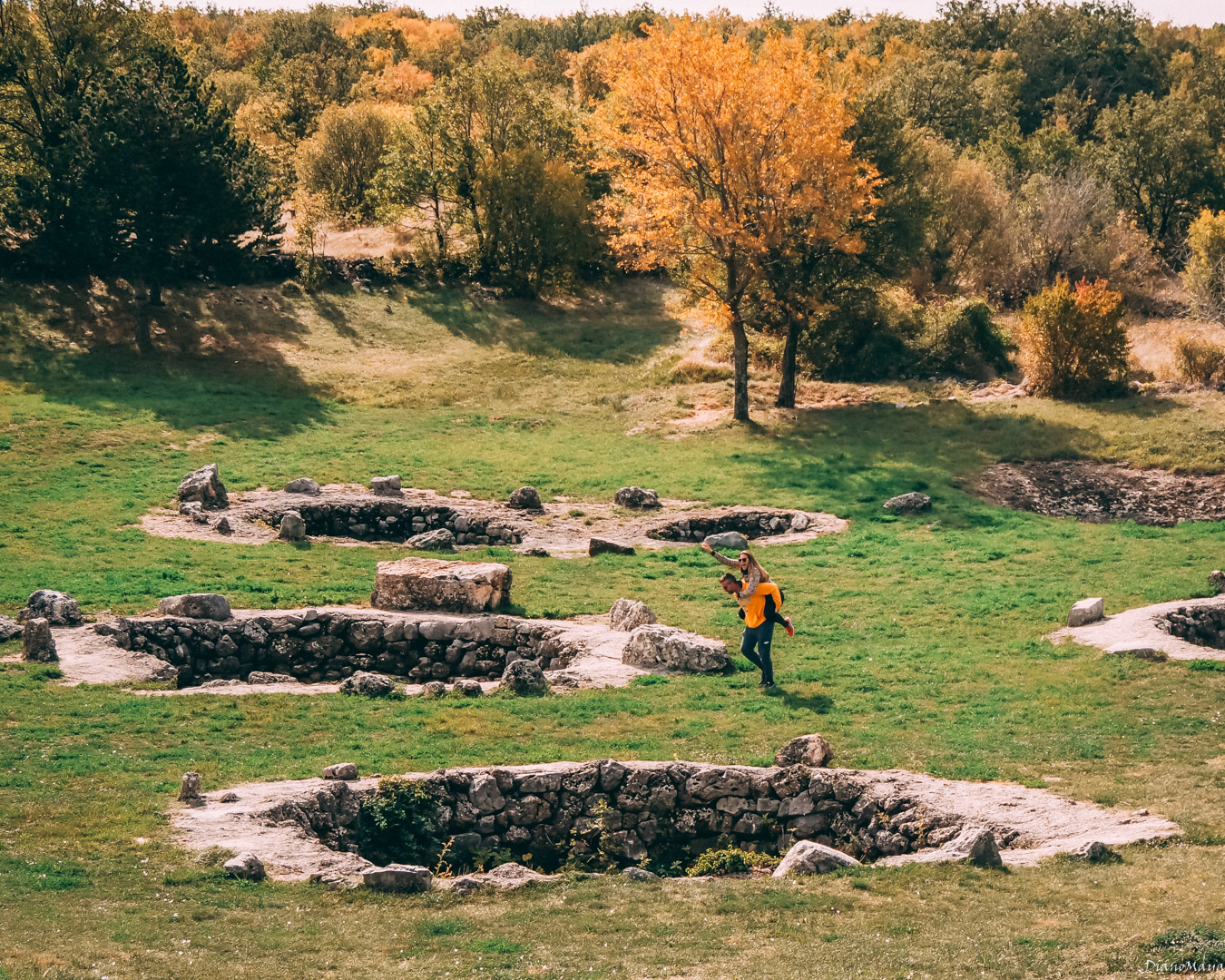
The necropolis Velika and Mala Crljivica in Cista
The necropolis Velika and Mala Crljivica is located in the village of Cista Velika along the main Trilj-Imotski road in a length of 200 meters.
South of the so called Velika Crljivica, the eastern part of the site, lays a karst sinkhole with seven wells constructed in the Middle Ages, i.e. in the Early Modern Age.
The site has been developing almost continually since prehistoric times. It is a complex archaeological site with several development phases.
It is UNESCO World Heritage Properties from 2016.
The necropolis Velika and Mala Crljivica in Cista are 8 km far away from our holiday home.
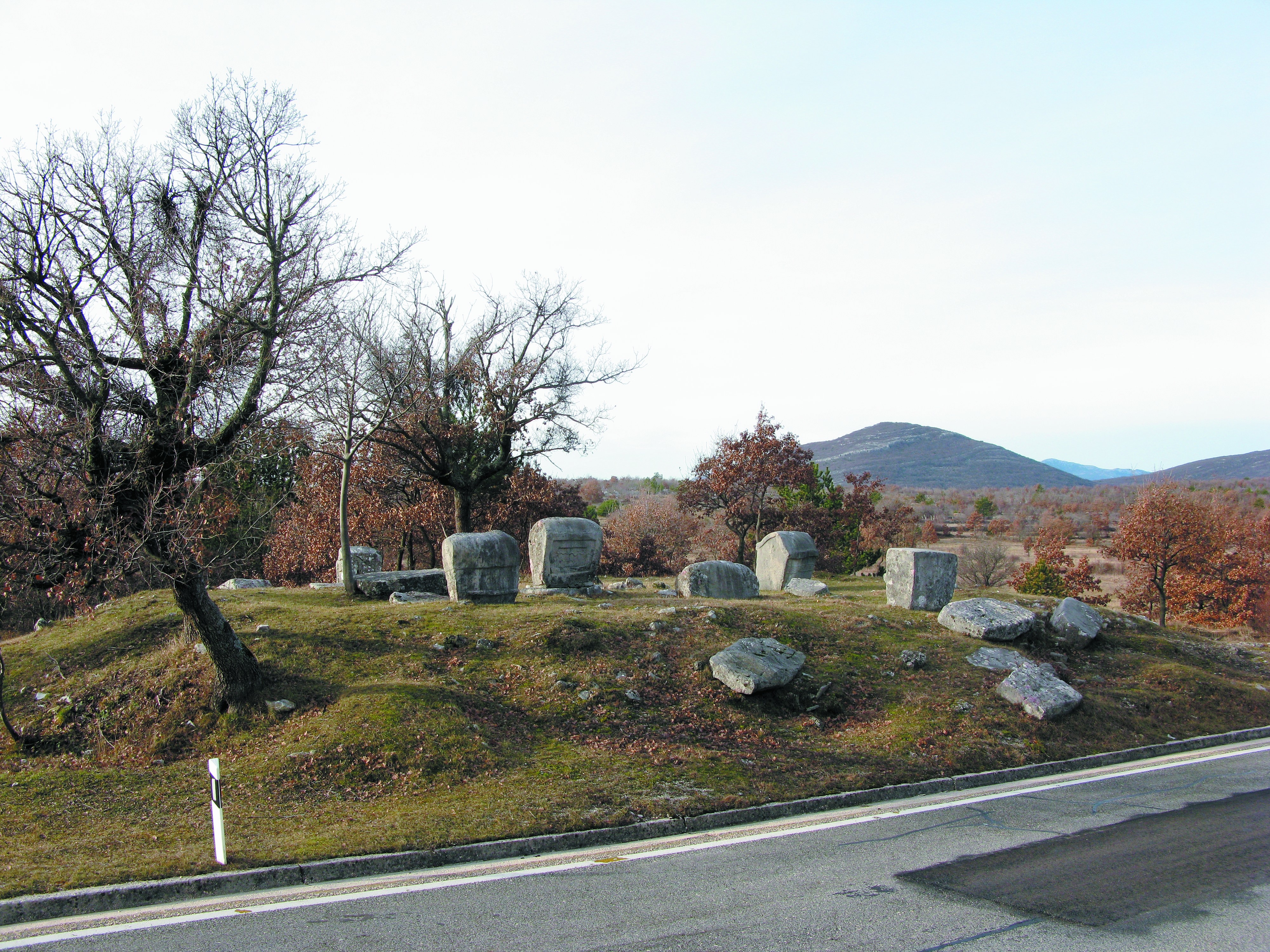
Old bridge in Trilj
The City of Trilj is famous for its number of bridges that in the olden days, as well as today, connected and still connect the coasts of the Cetina river.
One of the bridges, in time, became a tourist attraction and it is known by the name "Old bridge."
In the past, the old bridge was an iron bridge, and the construction began in 1878 under the watchful eye of Franz Joseph I., who gave permission and financial resources for its construction.
The „new-old bridge“ was renovated and opened in September 2017., 137 years after first „iron bridge“.
Old bridge in Trilj is around 30 km far away from our holiday home.

Nutjak fort
The Nutjak fort is located 3 km downstream from Trilj, on the right bank of the river Cetina.
It was built on a cliff overlooking the river, not far from where Cetina leaves Sinjsko polje and continues its winding path through the canyon to its confluence in Omis.
The fortress is dominated by a large circular tower, while the terraces south of the tower are the remains of the walls of other defensive or housing buildings.
Archaeological material from earlier periods was also found at the same site, so it can be assumed that the tower Nutjak was built on a prehistoric site.
Nutjak fort is around 35 km far away from our holiday home.
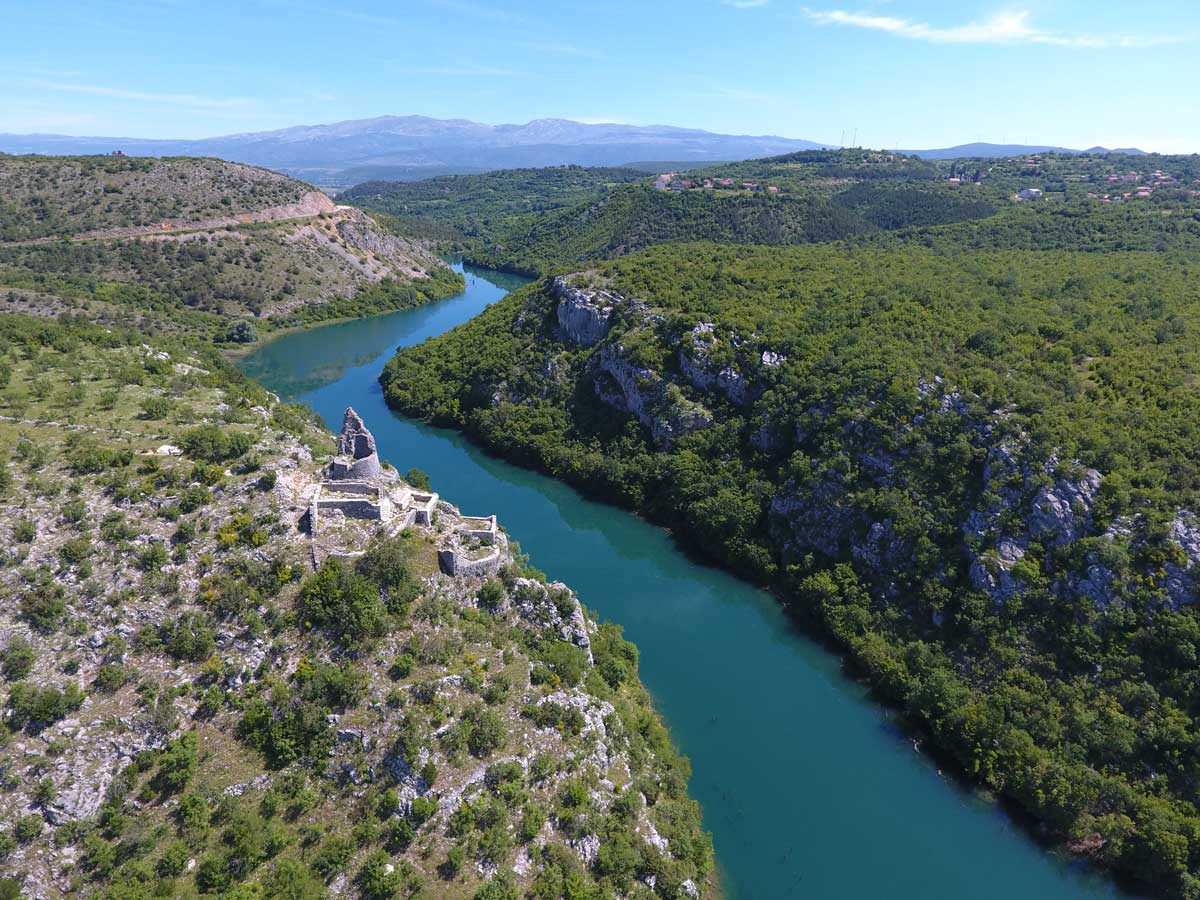
Tilurium
Roman legionary camp Tilurium is settled on the northeastern part of a plateau above Trilj, on the right bank of the river Cetina (Hyppus),
as one of the most important military hubs in Roman province of Dalmatia – encampment of the 7th Roman legion (legio VII. Claudia pia fidelis).
It covers around 12 hectares, and today the ancient settlement is covered with central part of the village Gardun which is right above Trilj.
Tilurium is around 35 km far away from our holiday home.
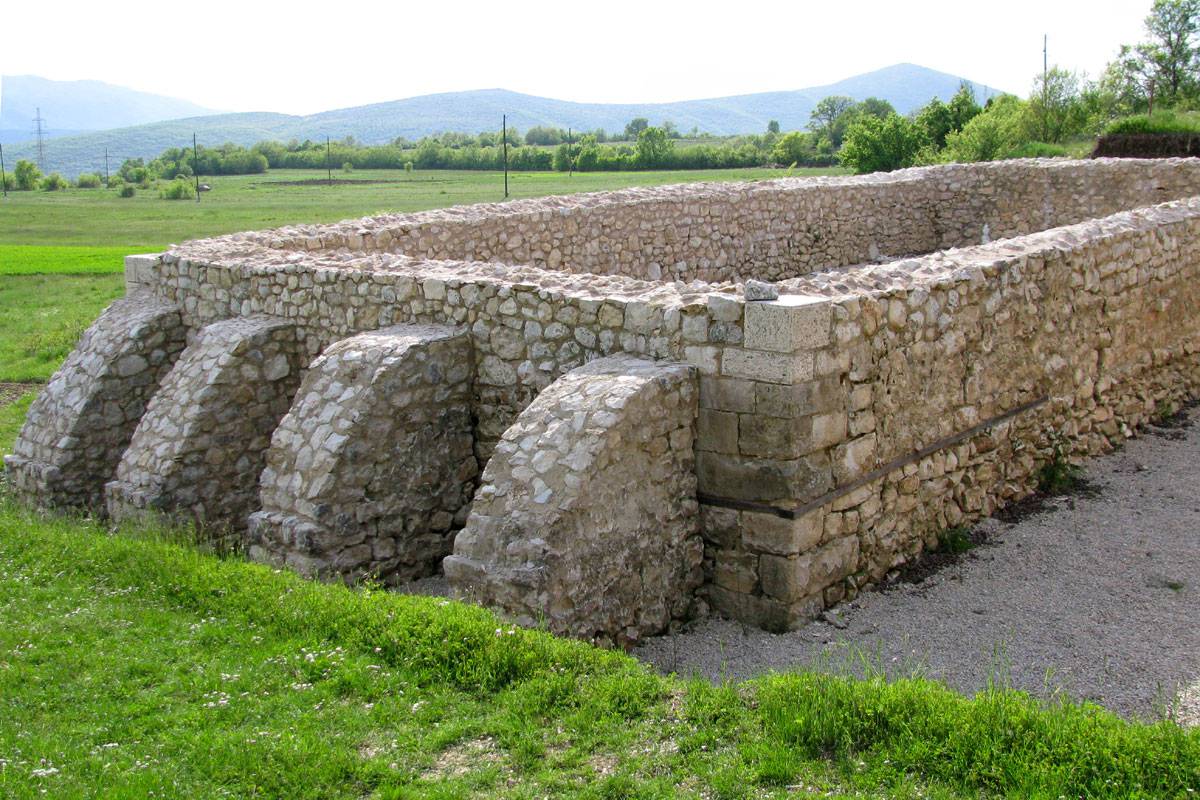
Skywalk Biokovo and Biokovo Nature Park
Skywalk Biokovo is located at the Ravna Vlaška area, at an elevation ot 1228 metres, right next to the infocentar at the 13th kilometre ot the Biokovo road.
At the viewpoint, there is also a geological column providing a 3D overview of the cross-section of the rock that forms Mt. Biokovo, from this formation until today, with a geological time chart and description of the types of rock and their ages.
The Skywalk is reached from the Biokovo road that starts at the entrance into Biokovo Nature Park,
about 6 km east of Makarska, and leads to the highest peak, Sv. Jure (St. George) at an elevation of 1762 metres, making it Croatia's highest paved road.
Skywalk biokovo is around 40km far away from our holiday home.
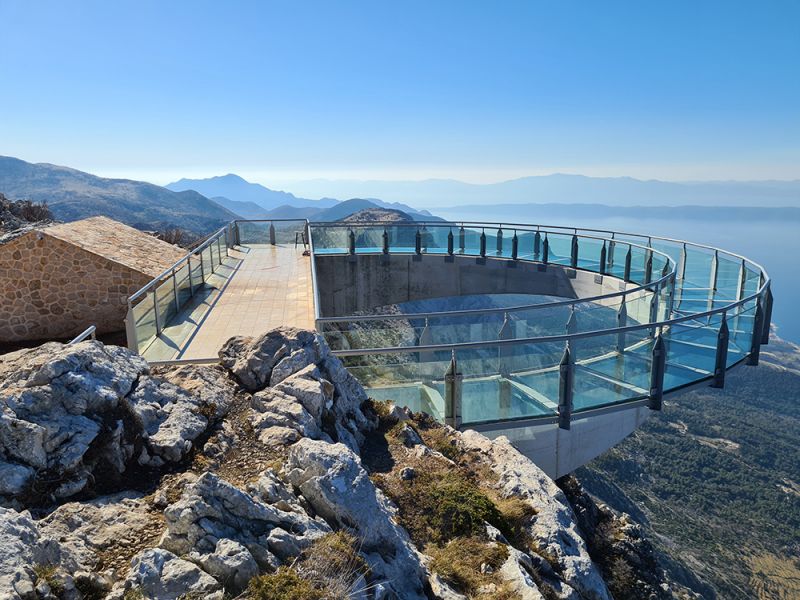
Salona
Near city of Solin there are remains of ancient Roman town Salona.
At it’s entrance you can find beautiful martyrs (Manastirine) and Tusculum, while at the south part there are remaining of the Roman forum.
There is small fee only for the Archaeological museum, which we skipped and enjoyed only outdoors.
Salona is around 50 km far away from our holiday home.

Klis fortress
Overlooking the city of Split, in the mountain pass between Mosor and Kozjak, lies the small village of Klis speckled with vineyards and olive groves.
At the center of this hillside village is a medieval fortress built into a rocky ridge giving visitors an incredible birds eye view of the entire Split “metropolitan” area, Adriatic Sea and surrounding islands.
The Fortress of Klis (Tvrđava Klis) has a history of more than 2000 years, beginning with the Illyrian tribe called Dalmatae that used it as a stronghold before it was taken by the Romans. After the fall of the Roman Empire, the site became a seat for several Croatian kings.
Later, the Klis Fortress was pivotal in defending the Balkans against the siege of the Mongols, then the Ottomans in the 1500s.
The fortress was used in a 1972 historical film Eagle in a Cage, portraying Saint Helena.
Klis was also used as a location for the fictional city of Meereen in the HBO series Game of Thrones.
Klis fortress is around 50 km far away from our holiday home.
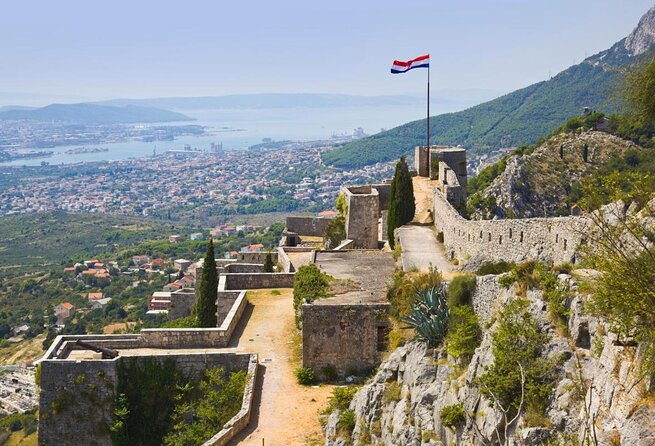
Galjipovac lake and Prološko blato with monastry
At Prološko blato there is an island called Manastir with the remains of a Franciscan monastery.
The Franciscans lived here from the 16th to the beginning of the 18th century during the Ottoman rule over these regions. In 1715 on the eve of the last Venetian and Ottoman war the friars left this island forever. Several years after the end of the Ottoman occupation they founded a monastery at Imotski.
Blato represents a lake which is under water for most of the year and the other part is dry or swamp.
At the steep hilltop “Grad” Between the hidden villages of Mamići and Knezovići lies a Roman and medieval fortress used as a shelter in times of danger.
Galjipovac lake is surrounded by steep rocks, which makes it difficult to access.
If you want a perfect view, visit the viewpoint, which is located on the main road, from which you can see the entire Galjipovac lake, Imotsko polje and Prološko blato.
It is around 20 km far away from our holiday home.

Green cathedral
Along the river Vrljika, in 1995, an “outdoor church” was built, the so-called Green cathedral – a structure with the outlines of a three-nave basilica with a sanctuary and a facade
– where a holy mass and procession is held for the feast of the Assumption.
The whole area around is a kind of “Our Lady’s Garden” of the Imotski region - a place of peace, tranquility, gathering and prayer.
It is around 25 km far away from our holiday home.
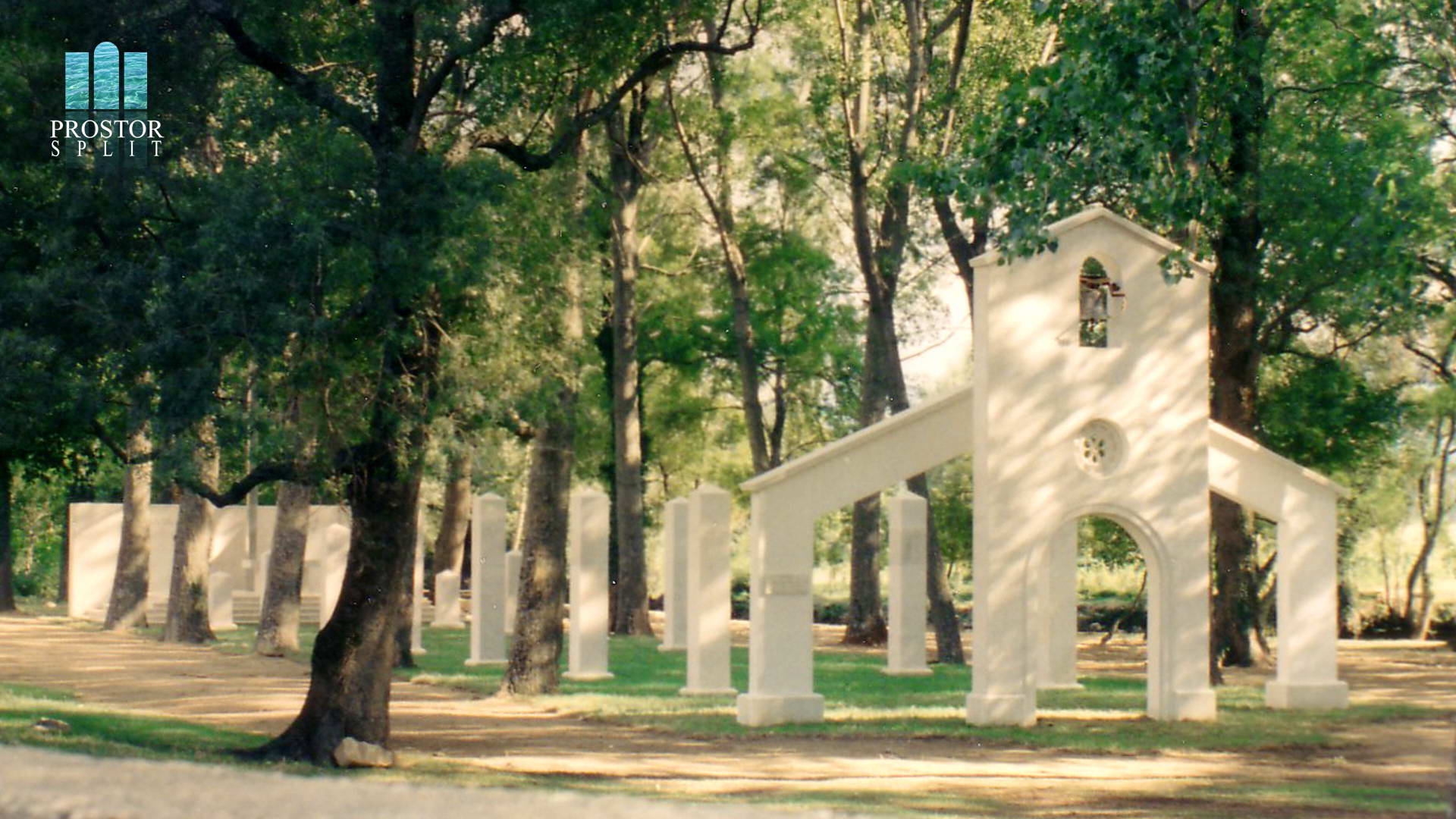
Blue Lake
Blue Lake is one of the most beautiful natural karst lakes in Croatia located near the town of Imotski.
It lies in a deep pit that was probably formed by the collapse of a ventilated underground cave.
The total depth from the upper edge is 220 meters and it varies depending on the season.
Water levels could reach more than 90 meters in early spring when snow from nearby mountains melts.
At the end of the summer, the lake could mystically disappear, so there is a fascinating football field at its bottom.
The lake is a popular place for tourists and residents of the town of Imotski because it is very accessible.
In addition there are trails that go almost to the bottom of the lake.
It is around 30 km far away from our holiday home.
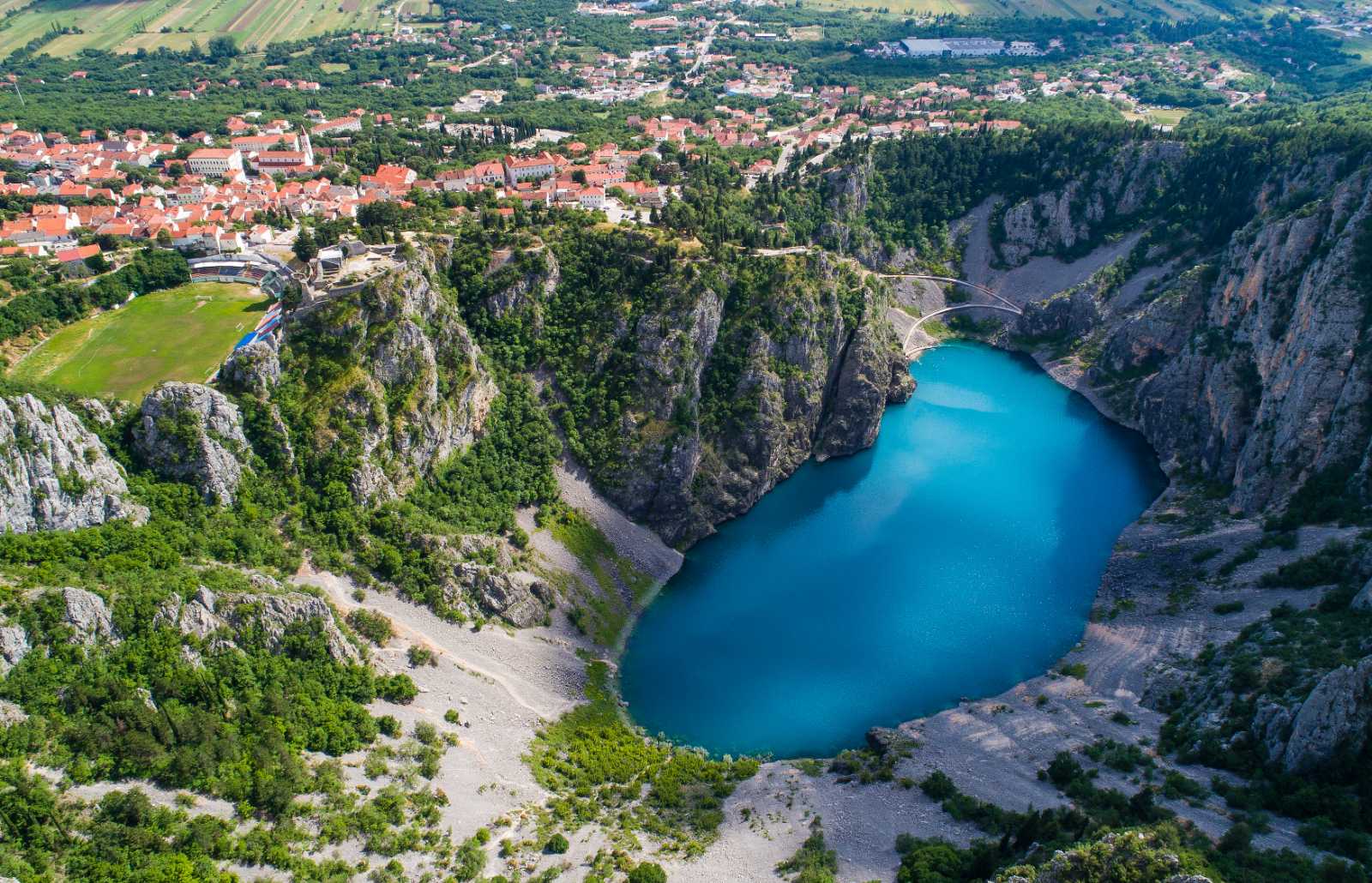
Red Lake
Red Lake lies in a deep, roughly circular sinkhole. It is surrounded by almost vertical tall walls from three sides and slanted from the fourth side which collapsed during a destructive earthquake that hit Imotski back in 1942.
Red lake is the deepest karst lake in Europe and one of the deepest in the world and it is almost impossible to approach it because of tall stone slopes around it.
The depth of the sinkhole is around 500 meters, with a width of 450 meters.
The diameter of the lake is approximately 200 meters and the depth is 290 meters.
Unlike the Blue Lake, the Red Lake never dries out.
It is around 30 km far away from our holiday home, near Blue Lake.
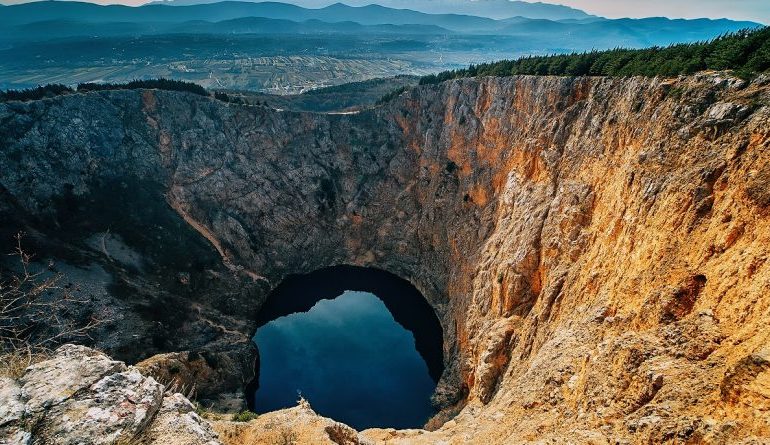
Topana Fortress
Topana Fortress is located above the city of Imotski, on steep cliffs between the Blue Lake and the soccer stadium, the so-called Gospin dolac. It is of irregular form, adapted to the natural shape of the cliff. Above the main entrance to the fortress there is a room which was once home to Father Stipan Vrljić, the first priest in Imotski. Immediately behind the entrance there also stands the small church of Our Lady of Angels – the patron saint of Imotski. The upper section of the fortress is older and probably built in the 14th century on the site of an earlier fortification. A 9th or 10th-century gable stone with an old Croatian wattle ornament was probably a part of this pre-existing fortification. Alongside the western and northern walls there are preserved residential spaces with water-wells. A part of a latrine is also preserved in the very southwestern corner, above the cliffs of the Blue Lake.
From the late 15th century until 1717 Topana Fortress was the administrative seat of the Kadija of Imotski, or the Ottoman civil administrator and judge. The fortress was renovated and reinforced a few times over the course of the centuries, and its name Topana is of Turkish origin and it describes a place where cannons are kept.
It is around 30 km far away from our holiday home, near Blue Lake.
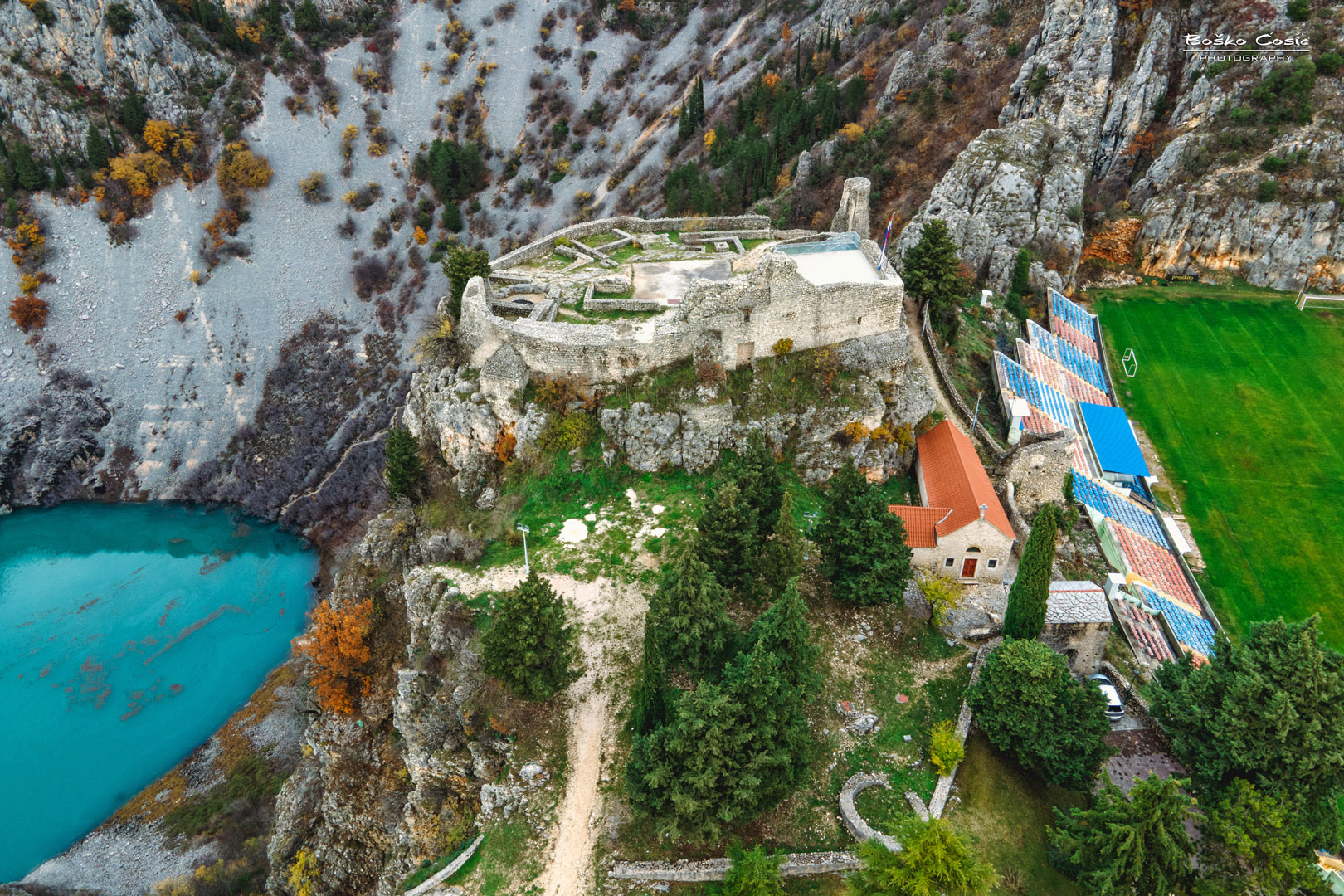
Gospin Dolac Stadium
One of the most original and most attractive stadiums in the world can be found in the Croatian town of Imotski.
The construction of the local stadium was not incredibly expensive, its size is just as modest.
The surrounding landscape makes the Gospin Dolac Stadium, opened in 1984, really unique.
The small stadium was built on the steep cliffs, within reach of the striking historical sights.
From the only colorful stand of the tiny stadium you can admire the panorama of the forest, the mountains, the wonderful Blue lake and the Topana Fertress near the football field.
It is around 30 km far away from our holiday home, near Blue Lake.
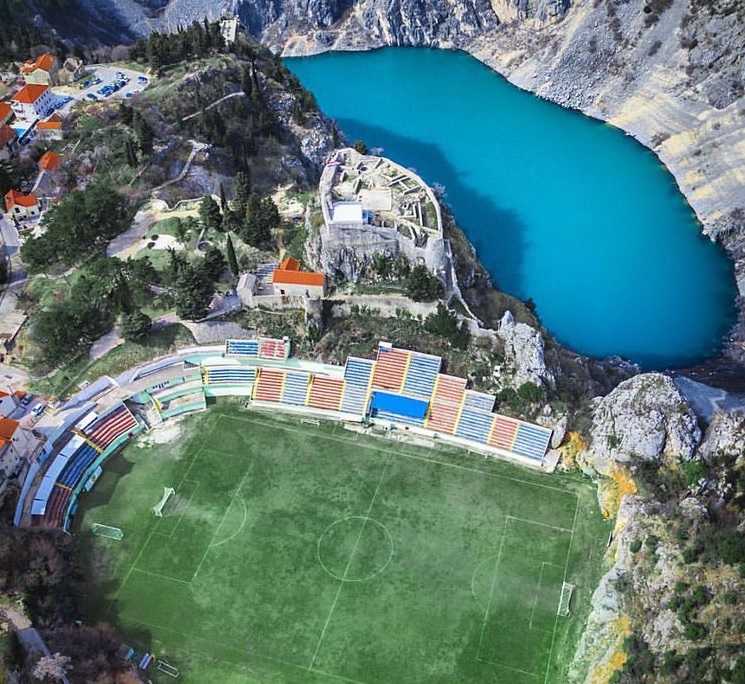
Pelješac bridge
The Peljesac Bridge is finally complete and open! Bypassing the need to drive through that part of Bosnia & Hercegovina (often referred to as the Neum Corridor) when travelling from Split to Dubrovnik or vice versa, the bridge certainly makes travel along the coastline easier for many visitors to Croatia.
The total length of the bridge is 2374 m. There is no toll for the bridge.
Pelješac bridge around 110 km far away from our holiday home.

The walls of Ston
With 5.5 kilometers of total length, strengthened by towers and fortresses, the walls of Ston are a true hidden monumental and cultural treasure of Dalmatia.
Located on the Pelješac, 60 km from the nearest large city – Dubrovnik, and unfairly neglected because of their inaccessibility, they are the least visited site in Europe in regard to their historical value.
Their construction started in 1333, and their most important, defensive role, was threefold: to protect the town of Ston and profitable salt and shellfish farms that make residents proud to this day.
The walls of Ston are around 130 km far away from our holiday home.

Dubrovik
Known as the Pearl of the Adriatic, Dubrovnik is home to a UNESCO World Heritage site and is one of the most prominent tourist resorts of the Mediterranean.
This beautiful city offers stunning architecture and boasts spectacular churches, monasteries, museums and fountains.
Dubrovnik is famous for its magnificent 13th-century city walls and the Old Town.
Strolling along the limestone-paved Stradun is a truly a one-of-a-kind experience.
The city was the rival of Venice at one time.
It is also the place where scenes from Star Wars Episode IX was filmed and houses the famous Lovrijenac Fortress, which is the setting for Kings Landing in the popular Game Of Thrones TV series!
This medieval town is so beautiful and scenic that movies and TV shows often select it as their shooting location.
Dubrovik is around 180 km far away from our holiday home.
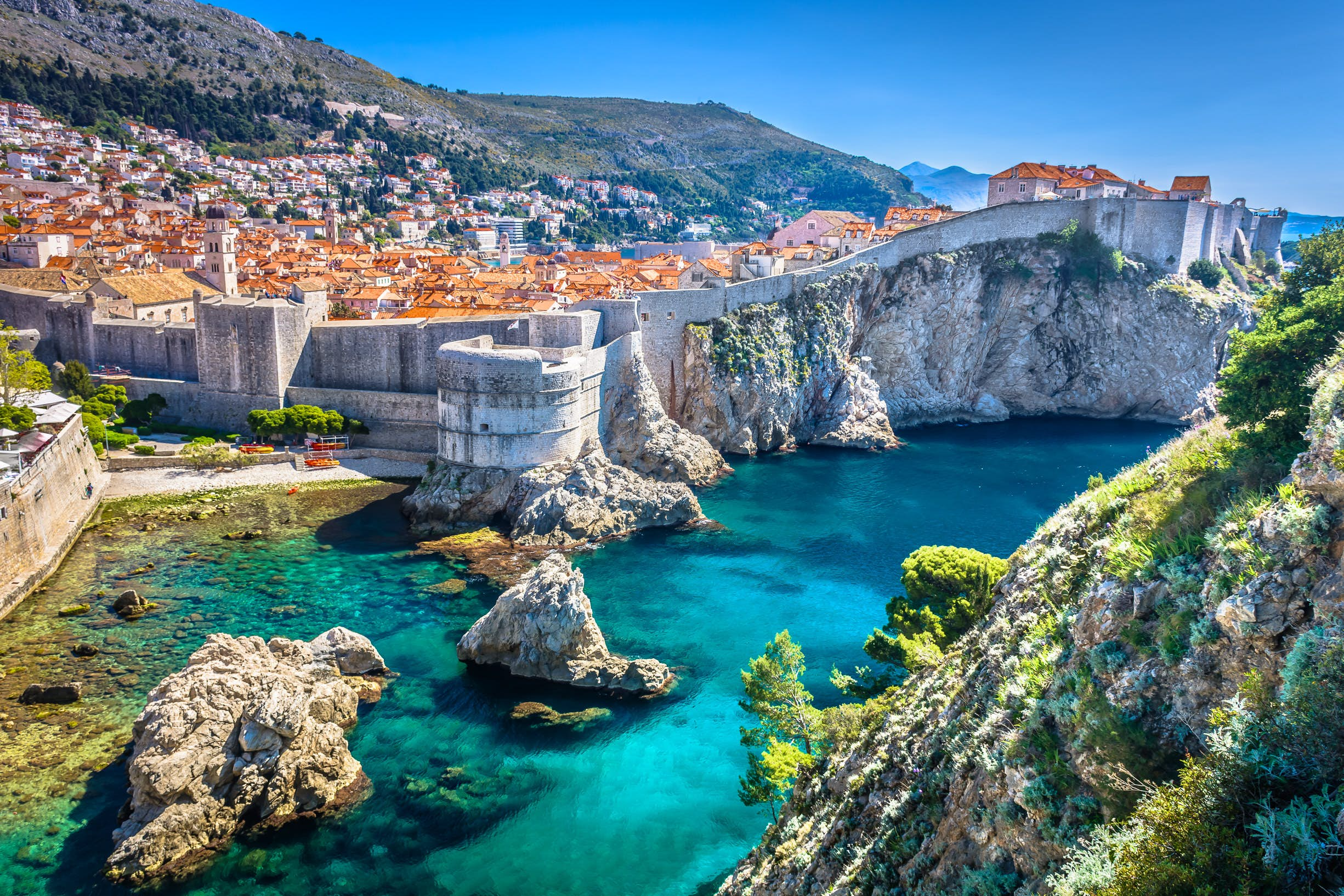
Krka National Park
Krka National Park lies about 10km inland from Sibenik in this part of Dalmatia.
Named after the Krka River, the Park covers an area of just over 142 square km and includes two-thirds of the river itself.
The top attraction of the Park is its magnificent waterfalls, including the famous Skradinski Buk falls which are one of Croatia’s most famous sights.
Other highlights include the small island of Visovac and Roski Slap waterfall.
A boat trip through the park (included in the entrance ticket) is a great way of seeing much of the Park.
The Skradinski Buk waterfalls are a collection of 17 waterfalls that range in height by over 45 metres.
The tiny island of Visovac in the Krka river was settled by Franciscan monks in 1445, who originally built a monastery in that year (later demolished, then rebuilt in the 18th century) and a church in 1576.
The monastery contains a number of well-preserved artefacts and a library.
Roski Slap (slap being Croatian for waterfall) is another famous sight within Krka National Park.
A series of 12 waterfalls in a space of 450 metres, the largest is just over 22 metres in height and 60 metres in width.
Locations, ticket prices and other information can be found at:
NP Krka web page
NP Krka is around 100 km far away from our holiday home.

Knin Fortress
The Knin fortress is one of the greatest Croatian fortification monuments and it is the second largest military fortification in the whole Europe,
extremely indented and preserved in all its parts. It is a living monument of culture that includes a museum, exhibition galleries and a restaurant.
The fortress is located 345 m above sea level and about 100 m above the Town of Knin, it is 470 m long, and on its highest part it is 110 m wide.
The defensive walls are about 2 km long.
Knin Fortress is around 120 km far away from our holiday home.
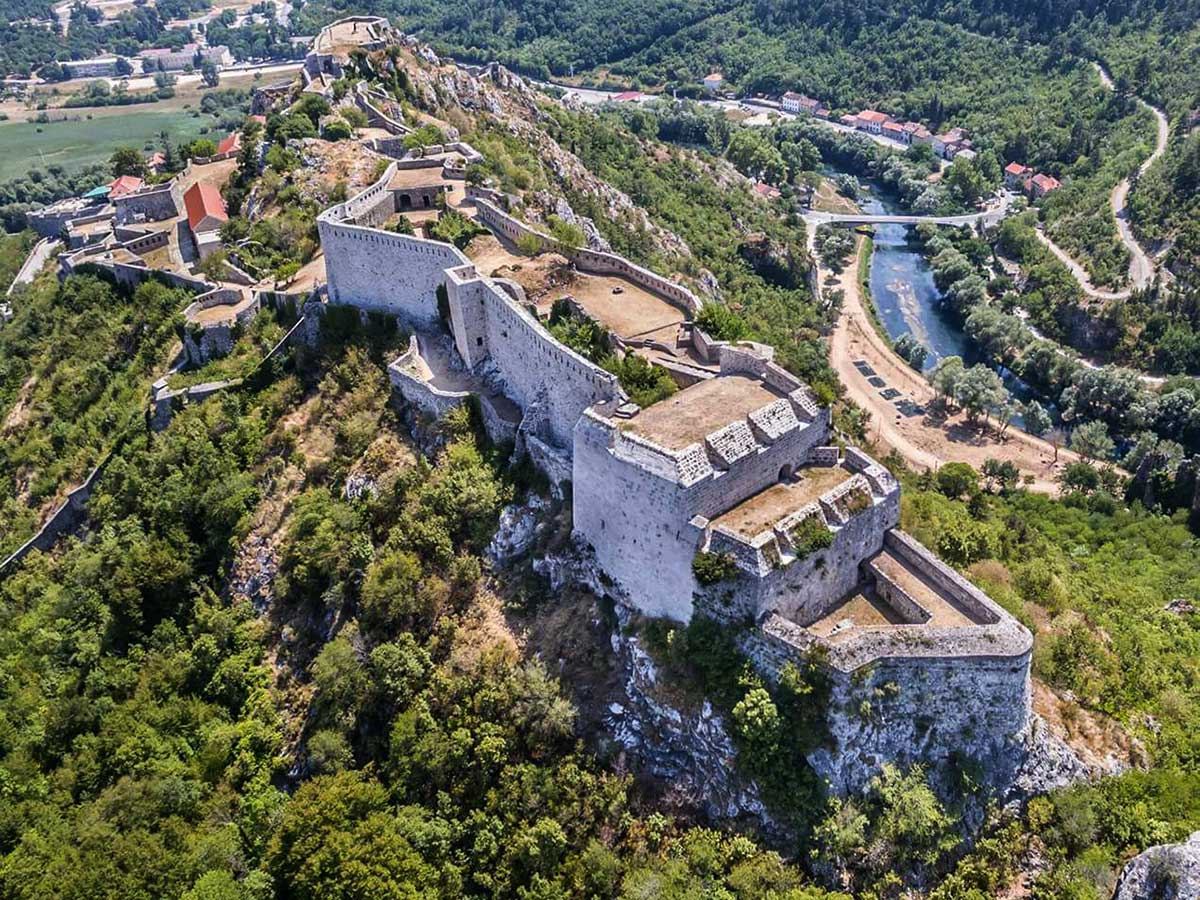
Plitvice National Park
As Croatia’s oldest and largest national park, the UNESCO World Heritage Plitvice Lake National Park
is reputed for its 16 emerald lakes and magnificent waterfalls—including Veliki Slap, the country’s largest waterfall.
The waters flowing over the limestone and chalk have, over thousands of years, deposited travertine barriers, creating natural dams which in turn have created a series of beautiful lakes, caves and waterfalls.
The park is broken up into the upper and lower falls, with a boat ride connecting the two. Various hiking loops are available,
with a panoramic train ride that goes through lush forest too.
Locations, ticket prices and other information can be found at:
NP Plitvice web page
NP Plitvice is around 260 km far away from our holiday home.
